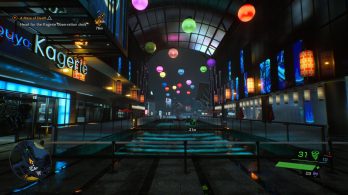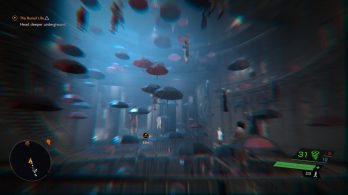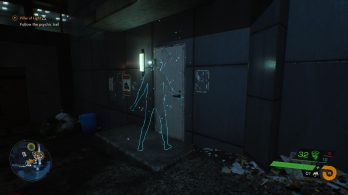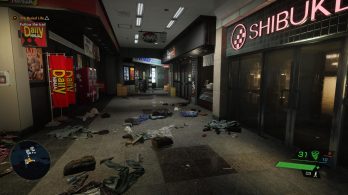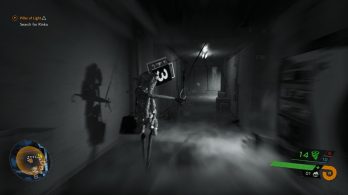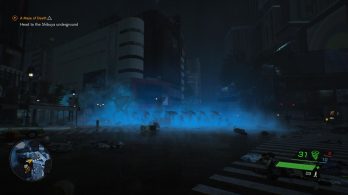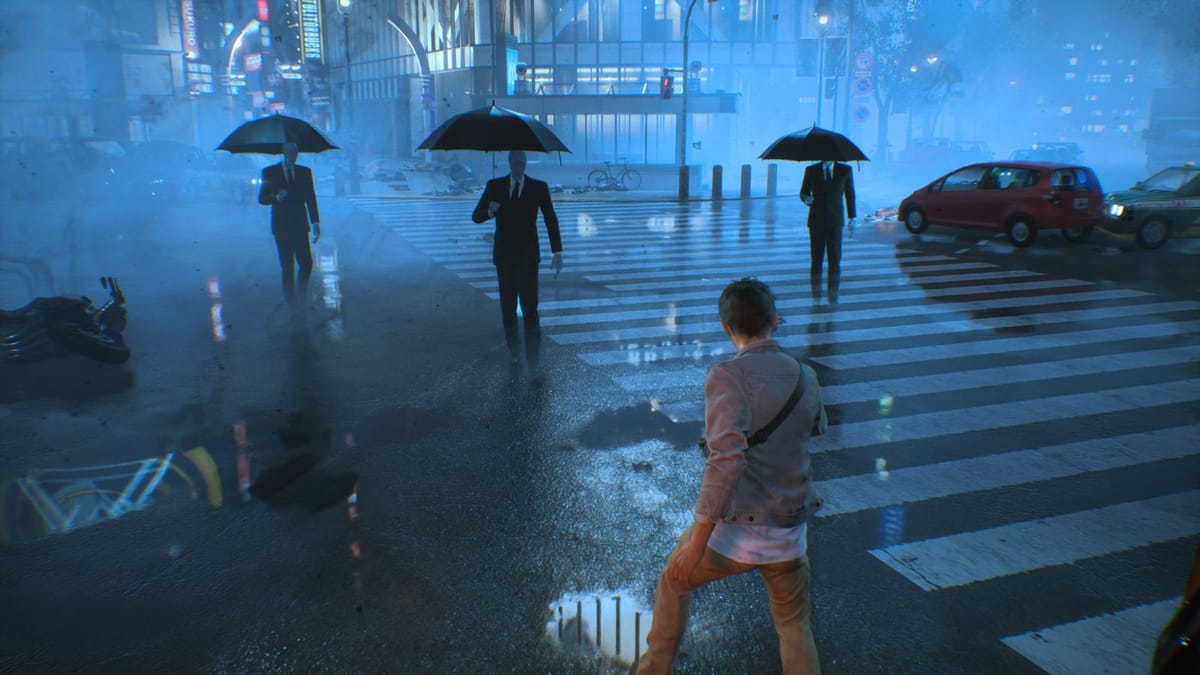
Tango Gameworks’ Ghostwire: Tokyo is quite an ambitious game; part first-person shooter, part RPG, and part horror game, Ghostwire tends to teeter between the three genres, never fully investing in any but creating a unique experience nonetheless. It is all at once trippy, horrific, funny, and tense – a fascinating mix of genres that meld to create one of the most creative first-person games in recent memory.
While not an out and out horror game, much of the scares stem from exploring an empty Tokyo – which is unnerving enough on its own – but then add in the faceless business men, headless school girls, little kids in raincoats, psycho hedge clipper wielding women, and a number of large monstrosities, and the city becomes absolutely terrifying to explore, at least before you’ve upgraded your skills and abilities to better withstand Tokyo’s perils.
Aside from the first chapter which sets up the story, players are free to roam the semi-open world at their leisure, with a few caveats. Much of the city is blocked by a dense fog which will slowly drain your health if you get too close; to clear this fog you must find corrupted Torri Gates, always guarded by enemies, and cleanse them – which in turn opens up new areas and side missions to tackle. A few times you will stumble upon a point when you will not be able to find any more gates to cleanse or areas to unlock, it is at these points you must progress the story to unveil how to proceed. Still, there’s never a shortage of things to do if you want to take a break from the main story, indeed, exploration is encouraged and may be the only way to gain enough XP to easily beat the game on harder difficulties.
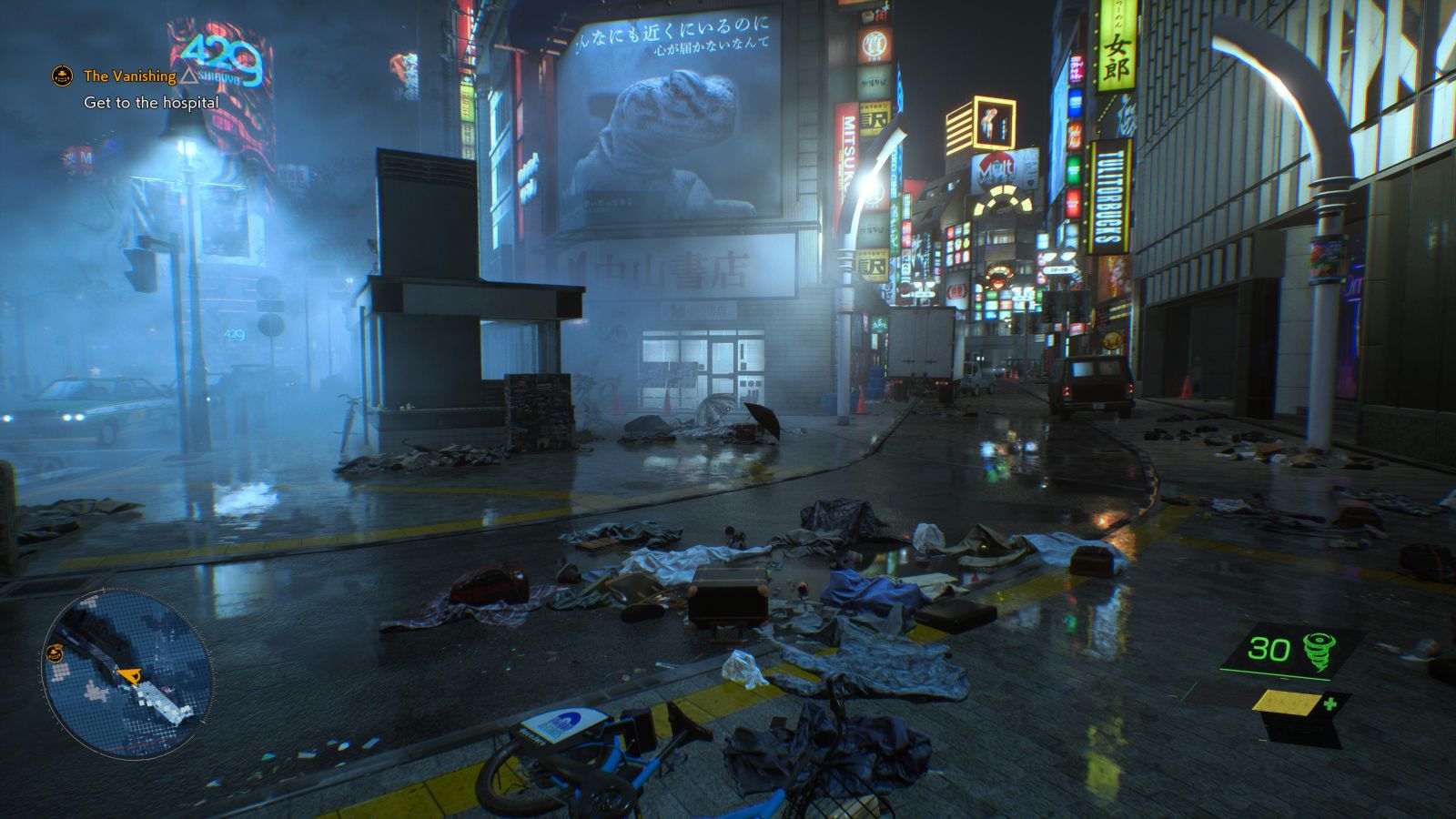
Ghostwire: Tokyo is filled to the brim with side missions, places to explore, areas to cleanse, enemies to fight, spirits to save, and mechanics to learn. There is nearly 20 hours of optional content for completionists, which is nice since the base game may only take players 12 to 15 hours to complete. The higher your difficulty setting, the more likely it is that you will need to complete side missions and rescue spirits for additional XP to help you keep up with the increasingly difficult enemy encounters. On lower difficulties, you will most likely be able to breeze through with just a few side content items completed.
For fear of spoiling the story, I’ll just provide a quick summary of the setting and leave it at that. You play as Akito, recently inhabited by a spirit named KK, and together you set out to save Tokyo. Tokyo was recently purged of all inhabitants due to the vanishing – a mysterious event seemingly spearheaded by an equally mysterious antagonist, which KK is set on defeating. Akito, mainly along for the ride, agrees to help in hopes of also taking care of an issue of his own.
Ghostwire: Tokyo is Japanese-inspired and Japanese made and Tango Gameworks urges players to experience the game with the original Japanese voice acting, although there is an English option for those who may want it. That Japanese authenticity helps to bring Tokyo and the spirits, enemies, items, and story beats you encounter to vivid life, allowing players to fully immerse themselves into the world and to learn about the culture at the same time. I played with the Japanese dialogue the whole time and the only complaint I have is there is quite a bit of back and forth between Akito and KK that takes place during fights, which makes it hard to keep up with the subtitles and avoid dying at the same time. Still, it was worth it for the authenticity.
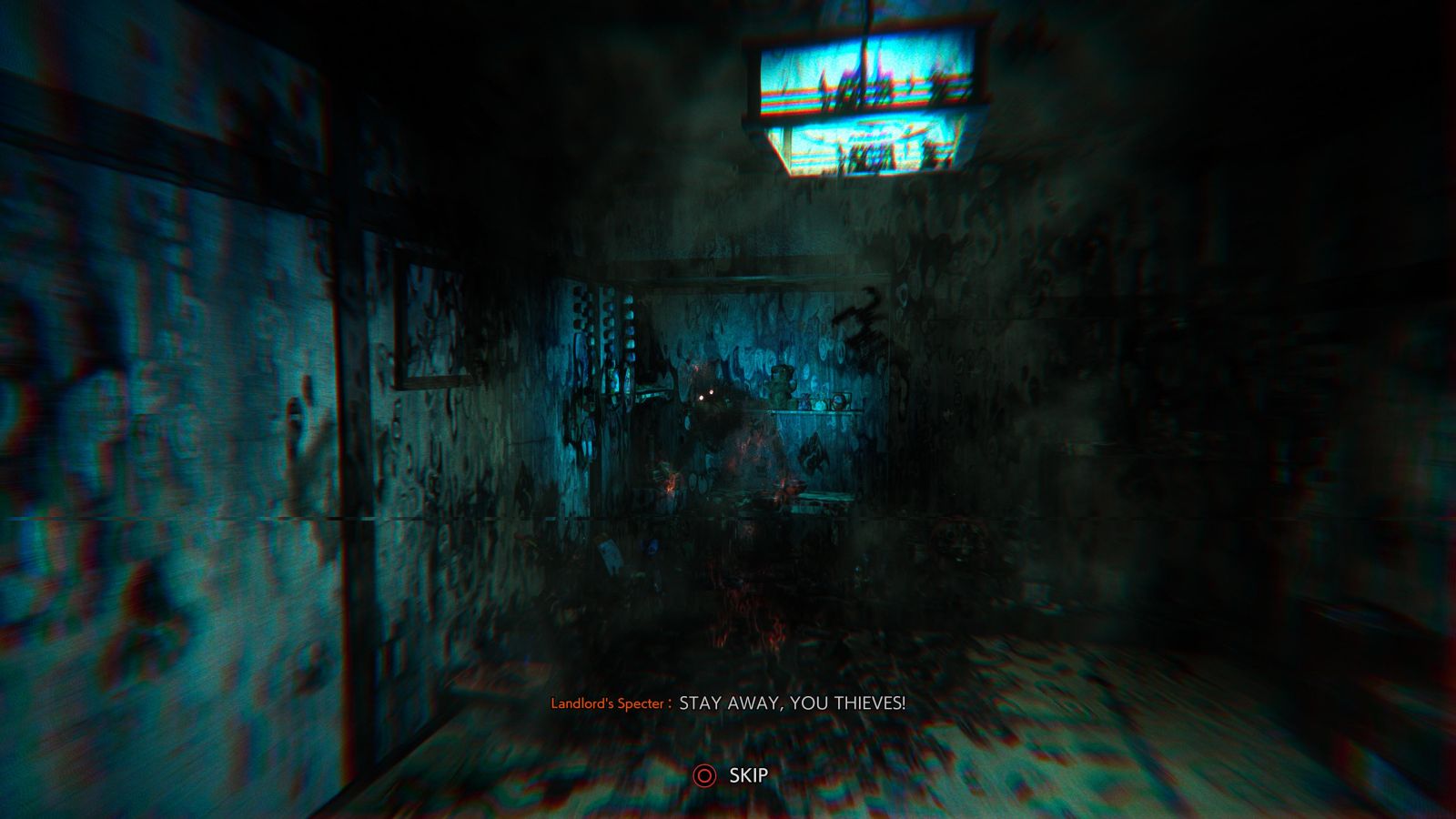
If you missed my preview, I went over in detail the intricacies of combat, so I won’t repeat everything here verbatim. In short, you attack via Ethereal Weaving attacks made out of wind, water, or fire which you are imbued with due to KK’s possession of Akito. Wind is your rapid attack, water is your spread out attack, and fire if your strong attack. At first, combat is slow and methodical – you will not be able to approach Ghostwire like a typical FPS. All attacks require SP, which can be gained by defeating enemies or destroying ether covered objects throughout Tokyo, but your ammo is limited and will constantly need replenished as enemies take quite a few hits to defeat and come at you in groups. Thankfully, after upgrading a few of your skills, Akito will be able to shoot much faster and hit much harder, allowing him an edge during the game’s late bosses and enemy groups. Once you get the hang of combat and get your abilities upgraded, you’ll be impressed at how quickly you can dispatch groups. Throughout the 17 hours I played I never tired of attacking multiple enemies in quick succession to expose their cores and then lassoing out all of their cores at once and watching them evaporate. It’s colorful, it’s fun, and it makes you feel powerful.
A bulk of the game is based around side missions, which are plentiful and rewarding. Nearly every mission begins via finding a distressed spirit and speaking to them and then helping them pass by completing their unfinished business. Unlike side quests in many games, these rarely felt like filler to me – I enjoyed learning about these individuals and completing their varied storylines. Some were serious in tone, like an early mission involving saving a soul from a suicide tower, while others are goofy, like finding toilet paper for a poor soul stuck in a bathroom. While not all are winners, there are more hits than misses and each is varied enough to not become repetitive.
My main gripe with the side missions, item collecting, and spirit collecting is that most of it is unnecessary on easy or normal difficulties. I completed around 20 side missions and collected 60,000 out of 240,000 souls in my playthrough and still completed the game within 17 hours with no struggle on the last boss. Sure, I could go back and complete all the side missions and collect all the souls before tackling the last boss again, but what reason do I have aside from extending the game? It becomes painfully hard for me to go back and complete arbitrary tasks when I already know that I am capable of beating the game without a hassle. I understand that not everybody is like me and many players do enjoy completing a game to 100% and for those individuals they will find a ton to love in Ghostwire: Tokyo. All others will most likely only need to complete all the side content if they hope to beat the game on the absolute highest difficulty where every unlockable skill would be a necessity.
There are two points of no return, a soft point where three side missions become unavailable, and a hard point where all content becomes locked until a new playthrough. At the soft point the game specifically tells you which side missions will be locked out if you progress, allowing you time to complete those tasks before continuing. The game does also warn you about the point of no return, so be sure to make a second save file at that point so you can easily go back and complete tasks if you’d want to later. I wish I could have explored Tokyo a bit after completing the main story, but it would not have made since so I can’t fault the developers for not allowing it. The game does allow you to make a completed save and start from a point a little before the end while bringing with you the XP you earned and the goodies which unlock after completion.
I mentioned it in my preview, but I’d like to touch on it again here; Ghostwire: Tokyo makes incredible use of many PS5 features, in particular the controller’s haptic feedback. The most notable use of haptic feedback is felt during rain storms, which feature a perfect blend of audio and vibration to make you feel as if you really are in the rain. The controller will have subtle vibrations all over, like rain drops falling on you from all directions. It’s a subtle effect that adds tremendously to the gameplay and a feature I hope more games will implement in the future.
If I sound a bit negative in this review, I don’t intend to. I truly think that Ghostwire: Tokyo is one of the most unique FPS/RPG/Horror blends in years and I loved the setting, fighting style, and powers. I just feel like the game may be too ambitious for its own good. Case in point, on the next to last fight I was introduced to a new mechanic which I assumed meant there was another area to explore where I’d have to struggle with that burden, but it never occurred again and the only thing that came after was the final boss fight. I mainly wish that the story was longer and gave me more time to upgrade my abilities and really put them to use in boss fights and increasingly complex situations.
GhostWire: Tokyo
Great
Ghostwire: Tokyo is a unique blend of FPS, RPG, and horror with a creative twist on how we approach fighting in an FPS. Despite a few grievances about the length and ambition of the project, it is still a good game, but unfortunately it merely toes the line between good and great, never quite finding its footing. Still, Ghostwire: Tokyo is well worth picking up.
Pros
- Unique concept
- Interesting combat mechanics
- Great use of the PS5 controller’s features
Cons
- Side content, while enjoyable, seems arbitrary on normal difficulty
- Story is over a bit too quickly


